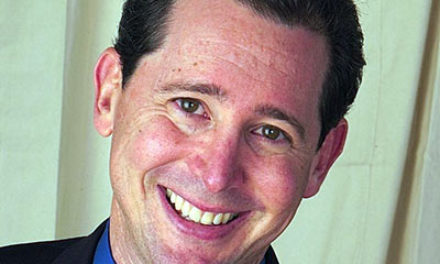Employee Burnout: One More Thing to Think About on Election Eve
A new industry survey offers grim results—but hope
By Ed Goldman
With at least the beginning of the election upon us—you don’t really think it’ll be over by midnight tomorrow, do you?—it might be a good time to think about how many things have gone haywire recently. One of the under-discussed but potentially economy-disrupting issues is worker attitude.
Some people didn’t just burn out in their jobs this year: they were burned alive, without a single firefighting plane available to spray them with flame retardant and strafe them with employment counseling leaflets.
A huge percentage of workers experienced stress and mental exhaustion at “a whole new level,” according to results of a survey by Robert Half International, one of the largest staffing, recruiting and HR firms on the planet—though, admittedly, its name makes it sound as though only 50 percent of it is global. (No, no, just kidding to relieve some stress: Half is actually the founder’s surname. And there’s no truth to the rumor that he had a sister named Thyme Anna.)
“When people weren’t working from home, their office lives felt more convenient,” says Shantel Poole, Sacramento-area branch manager for Robert Half. “They felt they had access to resources they don’t have at home.”
As someone who hasn’t worked in someone else’s office since 1984, I admit my notion of what constitutes “access to resources” is outdated: I think of resources as cabinets stuffed with pens, staplers, paper clips, envelopes and hole punchers.
“When they work in an office, people have their boss next to them and the HR office down the hall, and tech support a phone extension away,” she clarifies. “That kind of access. And some people are afraid to ask others for help by phone or text. But doing so in person seems easier.”
Shantel Poole, courtesy of Robert Half.
“Among the 28 U.S. cities surveyed, Indianapolis (46 percent), Dallas and Raleigh (43 percent each) reported the highest percentage of workers with increased burnout from a year ago. Women (38 percent) were more likely than men (30 percent) to report a rise in burnout. Nearly an equal percentage of respondents with children (35 percent) and those without (33 percent) said they are more worn out from work today versus 12 months ago.”
In the California’s capital, according to Poole, “the main factors pushing Sacramento professionals to their breaking point are: 24 percent noted they have fewer resources”—as defined above—“while 21 percent said they’re managing a heavier workload and 21 percent said their projects have unrealistic deadlines.”
If this year isn’t all root beer and chewing gum (I think I stole that expression from David Letterman satirically offering some cracker-barrel philosophy), last year wasn’t either. As I wrote here in February, Half had reported that “63 percent of company executives it surveyed said that ‘worker turnover has increased in the past three years, with lost productivity (29 percent), new hire training (26 percent), and recruiting (25 percent) being the costliest aspects when employees leave.’”
So the problem is: Not too many workers are happy and not too many want to stay in their jobs. But the pandemic has forced a lot of disgruntled employees to think twice about moving elsewhere, according to an executive recruitment expert I’ve interviewed from time to time—Preet Kuar, president and CEO of Pacific Staffing—because there’s a certain stability in staying put in uncertain times.
Poole herself has been working at home since March, as have her colleagues at Robert Half, and says she feels “just fine about this. I feel just as productive as before, if not more so. And I’ve had the time I spent commuting returned to me.”
Poole says that her company encourages employers to give their staff time off and help workers know that “just because they’re working from home doesn’t mean they have to start their jobs the minute they get up in the morning and work until bedtime.” Not surprisingly, Robert Half International offers its clients “a virtual wellness care package.” But it also publishes a regular brief on workplace woes that you can read even if you’re not one of its clients. It’s at roberthalf.com/blog.
Ed Goldman's column appears almost every Monday, Wednesday and Friday. A former daily columnist for the Sacramento Business Journal, as well as monthly columnist for Sacramento Magazine and Comstock’s Business Magazine, he’s the author of five books, two plays and one musical (so far).














